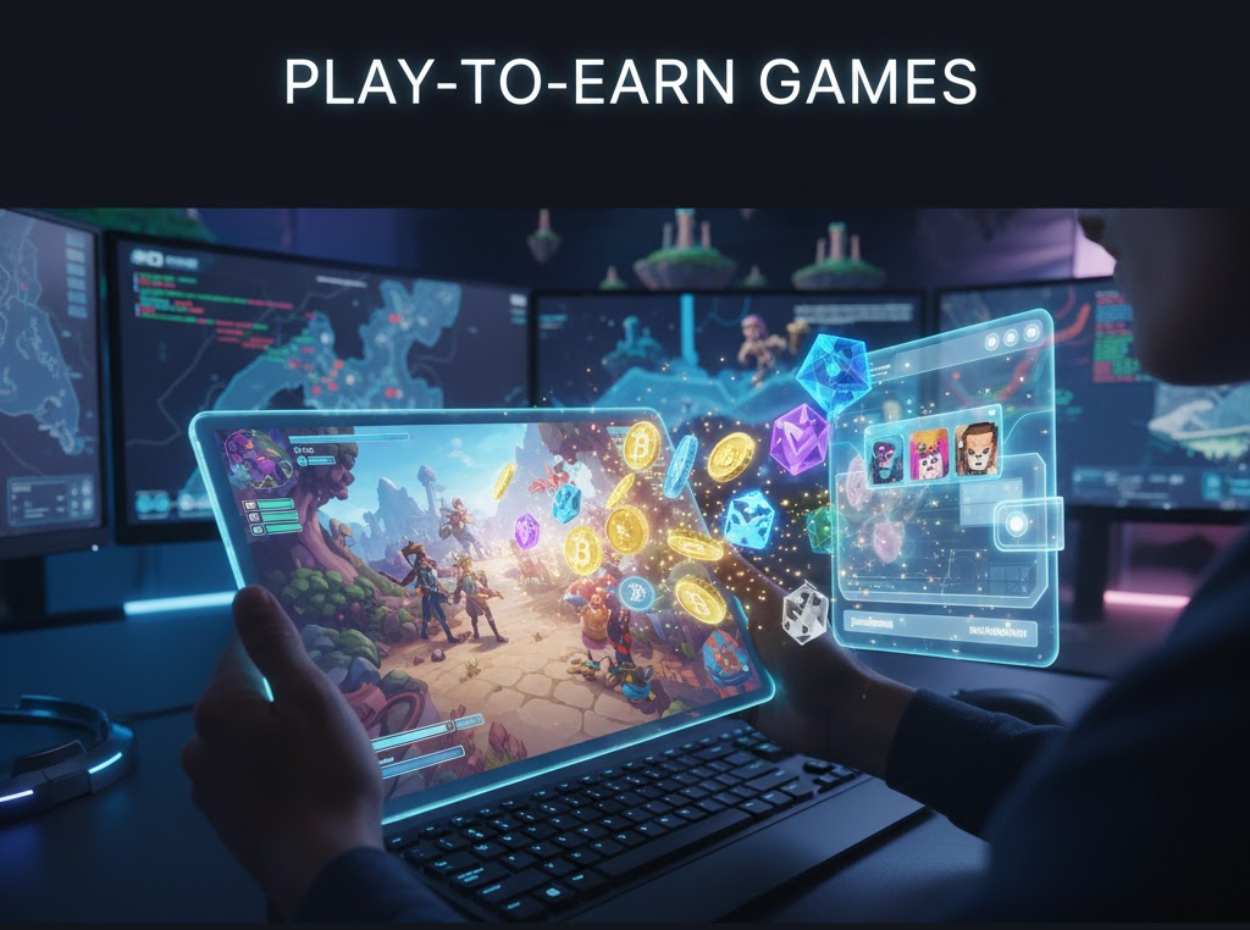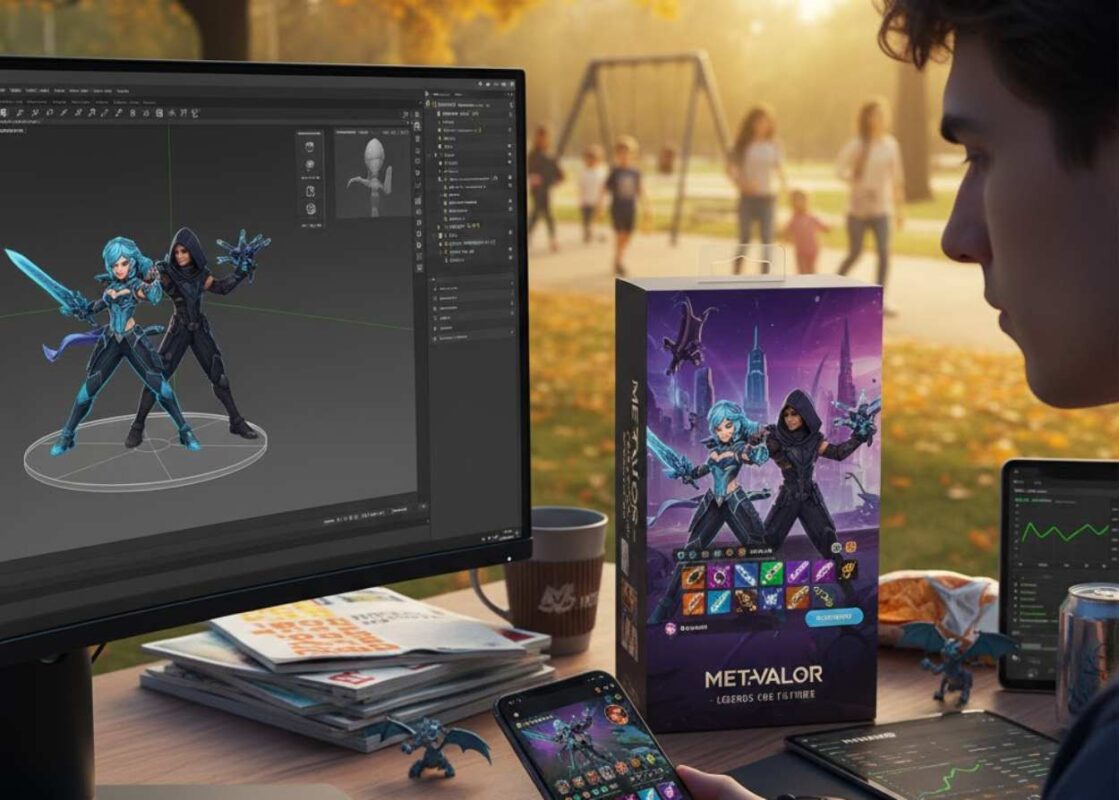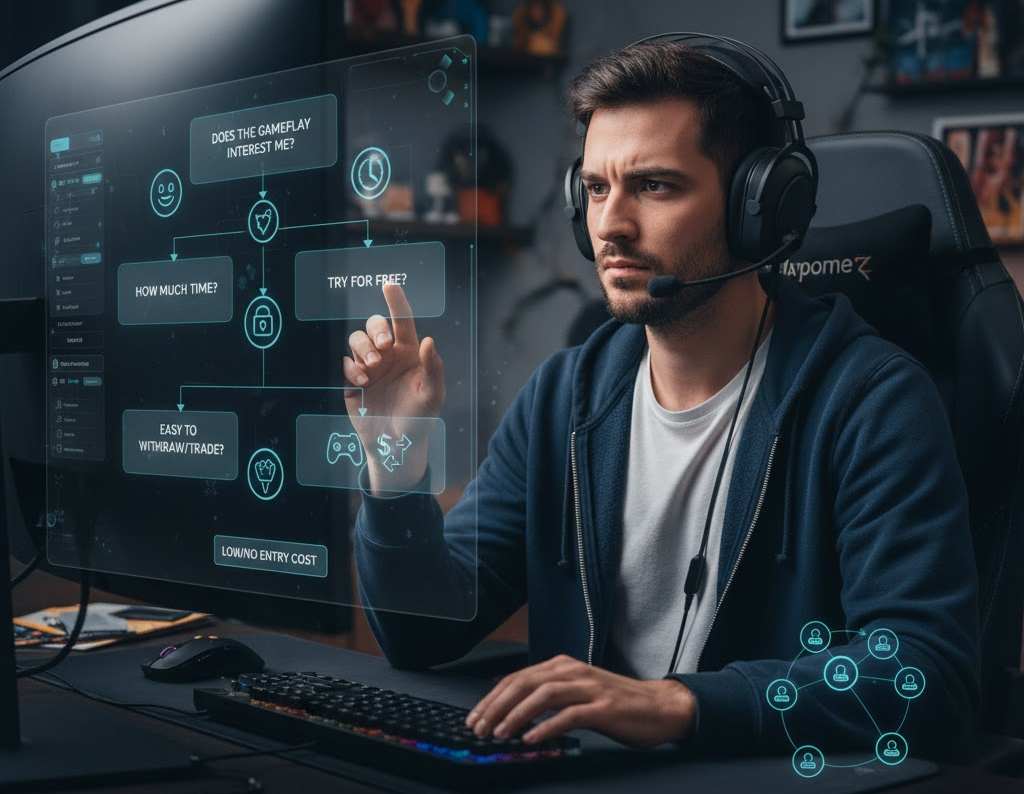How to Get Started With Play-to-Earn Games

Gaming is expected to follow the familiar rule for the absolute majority of people – you pay to play a game. You buy a game or pay for a subscription, and then enjoy the game. There was no other way for gaming. Winning in the game meant getting to a higher level or upgrading your character.
When it comes to casino gaming, this was a completely different concept and model; users also spent their money while playing games, but winning a game also meant receiving a real money reward. However, the reward only exceeds the money initially spent on the game if the person was accidentally fortunate.
Therefore, there was always a massive gap between these two models, between slot machines and video games, and many gamers wanted something in between. Something where they could play the kind of games they loved while earning real money rewards when they won.
This is where the so-called play-to-earn games (P2E) changed the situation by combining the versatility and creativity of classic video games with the financial element of blockchain, which allows for real money rewards, similar to those found in slot games. This way, players had a chance to win digital assets that had value outside the game as well.
Expert Reference:
- Schmid, U., & Sorgner, A. (2022). Blockchain Economics and Games. Springer.
- Werbach, K. (2018). The Blockchain and the New Architecture of Trust. MIT Press.
What Makes Play-to-Earn Different
Traditionally, video games require a financial investment for players to gain access. Play-to-earn games, on the other hand, reward players for their effort and time. Instead of paying a subscription fee for the game, users are rewarded as they play.
In-game rewards that also have value outside the game can be earned in different ways:
- Completing missions and quests;
- Winning battles or tournaments;
- Trading items with other players;
- Breeding or crafting new in-game assets.
The rewards themselves can be:
- Tokens;
- In-game currency;
- NFTs.
All these can be later exchanged for cryptocurrency or even fiat currency of the player’s choice.
The key difference here is the ownership of rewards. When the user wins something in a play-to-earn game, it belongs to them, not to the developer. This is what makes this model exciting for many players – the sense of ownership over their wins. This is somewhat similar to the best online casino Canada real money, where the player retains whatever they win.
Expert Reference:
- Hamari, J., Sjöblom, M., & Mäntymäki, M. (2021). Game Monetization and Player Behavior. Routledge.
- Tapscott, D., & Tapscott, A. (2016). Blockchain Revolution. Penguin.
Understanding NFTs and Digital Ownership

The term NFT (non-fungible token) may seem complicated, but the concept is straightforward.
An NFT is a unique digital item stored on the blockchain. NFTs can represent any item in the game – weapons, skins, assets, even virtual pets.
Each NFT is unique, one-of-a-kind. Whenever a user earns or buys this token, it becomes verifiably this person’s property from that point forward. No one can take it away without the owner being aware, duplicate, change, or delete it. This way, an NFT has real value.
For example, in traditional video games, a player can unlock a limited-edition sword or skin, which only exists within the game, in the player’s inventory, and is under the developer’s control.
In a P2E game, the situation is different. Once a player unlocks a sword, this item is an NFT that the player now owns. They can sell, trade, or use it across multiple virtual environments. This way, an in-game item stops being “just pixels” and becomes an item with economic value (even if a somewhat limited one).
Expert Reference:
- Dowling, M. (2022). Is non-fungible token pricing driven by cryptocurrencies?. Finance Research Letters.
- Nadini, M., et al. (2021). Mapping the NFT revolution: market trends, trade networks, and visual features. Scientific Reports.
How Players Can Actually Earn NFTs
Specific mechanisms, of course, depend on each game, but for general knowledge, the structure looks as follows:
- The player has to join a game that supports blockchain-based rewards.
- Complete missions, battles, or challenges to earn in-game tokens or NFTs.
- Trade or sell those assets either in the game’s marketplace or on external trading platforms (there are plenty of those nowadays);
- Convert their earnings into cryptocurrency, and from there, into regular money.
In other words, P2E games create a distinct branch of the economy where in-game actions can result in measurable value. The more the users play, the more opportunities they get to earn. However, the eventual outcome still depends significantly on the game’s sign, the player’s strategy and knowledge, and the market demand for particular in-game items.
Expert Reference:
- Castronova, E. (2005). Synthetic Worlds: The Business and Culture of Online Games. University of Chicago Press.
- Swan, M. (2015). Blockchain: Blueprint for a New Economy. O’Reilly Media.
Choosing the Right Game

Choosing the right game is one of the key steps towards success for a gamer wishing to earn real-value rewards while playing. Not every P2E project is the same; some are more fun to play and more rewarding, while others feel like work.
If you want to give it a try, first ask yourself these questions:
- Does the gameplay genuinely interest me? (If not, playing it will be a chore.)
- How much time am I willing to spend? (Some games really demand time.)
- Is there an entry fee or starter pack I need to buy?
- Can I try the game for free first? (I think you will not like it at all.)
- How easy is it to withdraw or trade my rewards? (If you are not able to sell or trade your items, the whole process loses any sense.)
It’s a good idea to start with games that have low or no entry costs. Once you understand the token mechanics, you can decide whether to invest.
Also, it is a good idea to look for games with big active communities. If there is a community behind the game, it means the game is entertaining, sustainable, gets updates and fixes, will not disappear overnight, and there is a potential market where you can sell or trade your NFTs.
Expert Reference:
- Yee, N. (2014). The Proteus Paradox: How Online Games and Virtual Worlds Change Us. Yale University Press.
- Nieborg, D. (2015). Crushing Candy: The Free-to-Play Game in Its Connective Commodity Form. Social Media + Society.
Final Insights
Play-to-Earn games represent a new frontier in the gaming industry, merging entertainment, ownership, and finance. They offer opportunities for both casual and dedicated players to turn their time into value — but also come with risks.
Like any investment or market, P2E is subject to volatility, game failures, and market speculation. Players should:
- Research thoroughly before investing time or money.
- Prioritize games that are enjoyable, not just profitable.
- Never invest more than they can afford to lose.
Disclaimer
This article is for educational purposes only and does not constitute financial or investment advice. Cryptocurrency, NFTs, and P2E games involve risks, including loss of funds. Always do your own research and consult a professional financial advisor if needed.
